Beginners Guides
How Big Of Tiny House Can You Put On Your Property
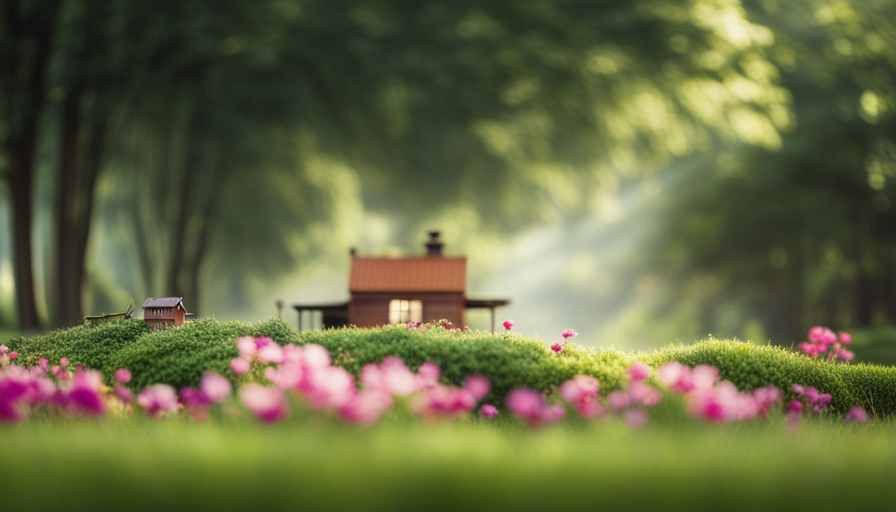
Were you aware that the dimensions of a tiny house can significantly differ based on the local zoning regulations and construction standards? Indeed, numerous elements must be taken into account to establish the maximum permissible square footage for a tiny house on your land.
According to a recent study, approximately 70% of cities in the United States have specific regulations for tiny houses, making it crucial to do your research before embarking on your tiny house journey. From height and width restrictions to setback requirements and parking regulations, understanding these rules is essential to ensure compliance and avoid any potential legal issues.
In this article, I will guide you through the process of determining how big of a tiny house you can put on your property, providing you with valuable insights and tips for navigating local regulations. So let’s dive in and discover the possibilities of living small, while staying within the bounds of the law!
Key Takeaways
- Local zoning laws and building codes dictate the size of a tiny house on your property.
- Researching local regulations is crucial to avoid legal issues and ensure compliance with safety standards.
- Factors to consider include square footage requirements, height restrictions, setbacks, and parking regulations.
- Understanding building codes and obtaining necessary permits is essential to ensure the tiny house is built to code and avoid fines or forced removal.
Research Local Zoning Laws and Building Codes
It’s crucial to research local zoning laws and building codes to find out how big of a tiny house you can put on your property. Building size restrictions and regulations vary by location, so it’s important to understand the specific guidelines in your area.
The tiny house movement has gained popularity in recent years, but not all communities are fully on board with this housing trend. Some areas have strict limitations on the size and placement of tiny houses, while others have embraced them as a solution to affordable housing.
When researching local zoning laws and building codes, you will need to consider factors such as minimum square footage requirements, height restrictions, setbacks from property lines, and even the type of foundation allowed. Some areas may also have specific guidelines for tiny houses on wheels versus those on a foundation.
It’s essential to familiarize yourself with these regulations to ensure you are in compliance and can avoid any potential legal issues.
By determining the maximum square footage allowed for tiny houses, you can begin to plan the size and layout of your dream home. Understanding the building codes and restrictions in your area will help you make informed decisions and ensure that your tiny house project stays within the bounds of the law.
Determine the Maximum Square Footage Allowed for Tiny Houses
Determining the max square footage allowed for a compact dwelling on your land can be a crucial step in embracing the minimalistic lifestyle. To determine the maximum square footage allowed for tiny houses, it’s essential to thoroughly research local zoning laws and building codes.
These regulations vary from one jurisdiction to another, so familiarizing yourself with the specific requirements in your area is essential.
Assessing the impact of a tiny house on your property value is another important consideration. While some areas may have lenient restrictions on square footage, it’s essential to evaluate how a smaller dwelling might affect the overall value of your property. Factors such as the size of neighboring homes and the local real estate market should be taken into account.
In addition to square footage, it’s crucial to consider height and width restrictions as well. These limitations can play a significant role in determining how big of a tiny house you can build on your property. By considering all of these factors, you can ensure that your tiny house complies with local regulations while also maximizing the potential of your property.
When considering the height and width restrictions for your tiny house, it’s important to keep in mind that these limitations can vary depending on your location. Therefore, it’s crucial to thoroughly research and understand the specific requirements in your area before proceeding with the construction of your compact dwelling.
Consider the Height and Width Restrictions
To fully embrace the minimalist lifestyle, closely examining the height and width restrictions within your local jurisdiction is crucial when considering the construction of a compact dwelling. It is important to understand the limitations imposed by these restrictions to ensure that your tiny house complies with the regulations in your area.
When it comes to height restrictions, different jurisdictions may have varying rules. Some areas may have a maximum height limit of 13 feet, while others may allow up to 20 feet. It is essential to check with your local authorities to determine the specific height restriction for your property.
Similarly, width restrictions also play a significant role in determining the size of your tiny house. Many jurisdictions have specific requirements for the maximum width of a structure. This restriction ensures that the tiny house maintains a proportionate size in relation to the surrounding properties.
To give you a better idea of the potential limitations, here is a table summarizing the height and width restrictions in different areas:
| Location | Height Restriction | Width Restriction |
|---|---|---|
| City A | 13 feet | 8 feet |
| City B | 15 feet | 10 feet |
| City C | 20 feet | 12 feet |
By understanding the height and width restrictions in your area, you can ensure that your tiny house complies with the rules and regulations. It is essential to consider these limitations as you explore setback requirements for placement in the subsequent section.
Explore Setback Requirements for Placement
Before delving into setback requirements for placement, let’s explore how setback regulations can sometimes feel like navigating through a maze of bureaucratic obstacles.
Setback requirements refer to the minimum distance that a tiny house must be located from the property lines. These regulations are put in place to ensure safety, privacy, and proper land use. The specific setback requirements can vary depending on the local zoning laws and the size of the property.
When it comes to setback requirements, it’s essential to familiarize yourself with the land use restrictions in your area. These restrictions determine the type of structures that can be built, their size, and where they can be placed on the property. Some areas may have strict setback requirements, while others may have more flexibility.
To determine the setback requirements for your tiny house, you’ll need to consult your local zoning department or planning commission. They’ll be able to provide you with the specific regulations that apply to your property. It’s crucial to adhere to these requirements to avoid any potential legal issues or fines.
Now that we’ve explored setback requirements, it’s time to check if a building permit is required for your tiny house project.
Check if a Building Permit is Required
Now, you may be wondering if you’ll need to obtain a building permit for your exciting tiny house project.
When it comes to building permit requirements for tiny houses, it’s important to research and understand the specific regulations and legal restrictions in your area. Building codes and permit requirements can vary from one jurisdiction to another, so it’s crucial to check with your local building department or zoning board to determine the exact requirements for your tiny house.
In many cases, building permits are required for the construction of any structure, including tiny houses, on your property. These permits are necessary to ensure that your tiny house meets safety standards and complies with local building codes. Failure to obtain the required permits can result in fines, penalties, or even the forced removal of your tiny house.
Before you start construction, it’s essential to familiarize yourself with your local building permit requirements and obtain all necessary permits. This will help you avoid any legal issues and ensure that your tiny house is built to code. Once you’ve obtained the required permits, you can move forward with your project, confident in the knowledge that you’re adhering to all legal requirements.
In the subsequent section, we’ll look into utilities and off-grid options for your tiny house, which is another important aspect to consider when planning your project.
Look into Utilities and Off-Grid Options
Explore the exciting world of utilities and off-grid options for your tiny house project and discover the possibilities for a sustainable and independent lifestyle. When it comes to living off grid, there are several sustainable energy options to consider. By generating your own power, you can reduce your carbon footprint and live more self-sufficiently. Solar panels are a popular choice for tiny houses, as they provide a renewable source of energy. Additionally, wind turbines can be a great option if you have a windy location. Another way to reduce your reliance on traditional utilities is by collecting and storing rainwater for everyday use. This not only conserves water but also saves on utility bills.
To help you better understand the various utilities and off-grid options available, here is a table outlining some key considerations:
| Utility/Option | Description |
|---|---|
| Solar panels | Generate electricity from sunlight |
| Wind turbines | Produce energy from wind power |
| Rainwater collection | Harvest rainwater for household use |
Considering the access and parking requirements for your tiny house is the next important step in your project. By carefully planning these aspects, you can ensure a smooth transition into your new lifestyle without any unexpected challenges or limitations.
Consider the Access and Parking Requirements
As I ponder on the logistics of my tiny abode, I envision the smooth rhythm of my new lifestyle by carefully considering the access and parking requirements.
Accessibility is a key consideration when placing a tiny house on my property. I need to ensure that there’s a clear and safe path leading to the entrance of my tiny home. This may involve building a ramp or stairs, depending on the height of the house. Additionally, I should check local accessibility requirements to make sure that my tiny house meets any necessary standards.
Parking regulations are another important factor to consider. Before placing my tiny house on my property, I need to determine if there are any specific parking requirements or restrictions. Some areas may have minimum setback requirements, which dictate how far the house must be from the property line or neighboring structures. Additionally, I should find out if there are any restrictions on parking a tiny house on wheels, as some municipalities may classify them as recreational vehicles.
By carefully considering the access and parking requirements, I can ensure that my tiny house is placed in a way that’s safe, convenient, and compliant with local regulations. As I explore community regulations and HOA restrictions, I’ll continue to navigate the exciting journey of creating my ideal tiny home.
Explore Community Regulations and HOA Restrictions
While navigating through the process of creating my dream abode, it’s essential to delve into the intricate web of community regulations and HOA restrictions. These guidelines can have a significant impact on the size and design of my tiny house. Understanding the restrictions imposed by the Homeowners Association (HOA) is crucial, as they may have specific rules regarding the placement, size, and appearance of tiny houses within the community.
To emphasize the importance of exploring community regulations and HOA restrictions, consider the following nested bullet point list:
-
HOA restrictions:
- Some HOAs may completely prohibit tiny houses on properties, while others may have specific size requirements or design standards.
- It’s important to thoroughly review the HOA’s governing documents or consult with the HOA board to understand any limitations or guidelines pertaining to tiny houses.
-
Tiny house movement:
- The tiny house movement has gained popularity in recent years, with many people opting for smaller, more sustainable living spaces.
- However, not all communities embrace this movement, and there may be local regulations that restrict the size or placement of tiny houses.
-
Consult with a professional or local authority:
- To ensure compliance with community regulations and HOA restrictions, it’s advisable to consult with a professional such as an architect, builder, or local zoning authority.
- They can provide valuable insights and guidance on navigating through the complexities of building a tiny house within the confines of community regulations.
Being well-versed in community regulations and HOA restrictions is crucial when considering the size and design of a tiny house. By understanding these guidelines and seeking professional advice, I can successfully navigate the intricacies of creating my dream abode.
Transitioning into the subsequent section about consulting with a professional or local authority, I can gather the necessary information to make informed decisions about my tiny house project.
Consult with a Professional or Local Authority
To truly achieve your dream abode without breaking any rules, seek out the expertise of a professional or local authority who can guide you through the intricate maze of community regulations and HOA restrictions.
When it comes to building a tiny house, it’s crucial to consult with someone who is knowledgeable about the specific regulations in your area. There are several consultation options available to ensure you’re well-informed and compliant with local jurisdiction.
One option is to hire a professional architect or builder who specializes in tiny house construction. They’ll have a thorough understanding of the regulations and can help you navigate through the process. Another option is to consult with a local authority, such as a city planner or zoning official, who can provide you with the necessary information and permits required for your tiny house project.
It’s important to remember that regulations vary from one jurisdiction to another, so it’s crucial to consult with someone who’s familiar with the specific rules in your area. By seeking expert guidance, you can avoid potential setbacks and ensure that your tiny house meets all the necessary requirements.
Moving forward, once you’ve consulted with a professional or local authority and understand the regulations in your area, you can begin to plan and design your tiny house according to these guidelines.
Plan and Design Your Tiny House According to the Regulations
Once you’ve gathered all the necessary information from a professional or local authority, it’s time to roll up your sleeves and start brainstorming the blueprint for your dream tiny home, making sure it fits like a glove within the boundaries of the regulations.
When it comes to planning and designing your tiny house, it’s essential to consider the tiny house floor plans and design considerations that will comply with the regulations set by your local authority. These regulations may include restrictions on the size, height, and setback requirements for your tiny house.
One of the first considerations is the size of your tiny house. Take into account the maximum square footage allowed by the regulations and ensure that your floor plan fits within these limits. Consider the layout of your tiny house, including the number and size of rooms, as well as any specific requirements for amenities such as bathrooms and kitchens.
Additionally, you’ll need to consider the design aspects of your tiny house. Think about the exterior aesthetics, the materials you’ll use, and any architectural features that will complement the overall design. It’s also crucial to consider the functionality of the space, maximizing storage solutions and optimizing the use of every square inch.
By carefully planning and designing your tiny house according to the regulations, you can create a cozy and functional space that meets both your dreams and the requirements of your local authority.
Frequently Asked Questions
Are there any specific restrictions on the style or design of a tiny house in my local area?
In my local area, there are specific restrictions on the style or design of a tiny house. These restrictions can vary, so it’s important to check with your local zoning department or homeowners association for the specific guidelines in your area.
However, there are still plenty of creative design ideas for tiny houses that can be explored within these restrictions. It’s always a good idea to consult with professionals or do thorough research to ensure compliance with local regulations.
What are the penalties for not complying with local zoning laws and building codes?
If one doesn’t comply with local zoning laws and building codes, there can be serious penalties. These penalties may include fines, stop-work orders, and even legal action.
Non-compliance can also have a significant impact on the value of one’s property. It’s important to familiarize oneself with the specific regulations in their area to avoid these consequences. It’s advisable to consult with local authorities or professionals to ensure compliance and protect the property’s value.
Can I legally live in a tiny house full-time on my property?
Living in a tiny house full-time on your property is possible, but it’s important to consider the tiny house regulations and zoning in your area. These rules vary depending on the location, so it’s crucial to research and understand them thoroughly. By adhering to the guidelines, you can legally enjoy the benefits of tiny house living on your property.
Remember, knowledge is power when it comes to navigating the world of tiny house zoning.
Are there any restrictions on the materials I can use to build my tiny house?
There aren’t generally any specific restrictions on the materials you can use to build your tiny house, as long as they comply with local building codes and regulations.
However, if you’re interested in using alternative building materials or eco-friendly construction methods, there may be additional guidelines or incentives available.
It’s always a good idea to consult with local authorities or a professional builder to ensure compliance and make informed choices for your tiny house project.
Are there any restrictions on adding additional structures, such as a shed or deck, to my property along with the tiny house?
There may be restrictions on adding additional structures to your property, such as a shed or deck, along with your tiny house. However, with some creative storage solutions, you can make the most of your space inside the tiny house.
As for outdoor living spaces, you may need to check local regulations to see if there are any limitations on constructing decks or other outdoor structures. It’s always a good idea to consult with local authorities or a professional to ensure compliance.
Conclusion
After conducting extensive research and consulting with local authorities, I’ve uncovered some surprising information about putting a tiny house on your property. The restrictions and regulations are more stringent than you can ever imagine! It’s almost as if they don’t want us to enjoy the freedom and simplicity of tiny living.
The hoops one must jump through, the permits and codes to navigate, it’s enough to make your head spin. But fear not, dear reader, for with determination and perseverance, you can still make your tiny house dreams a reality. Just be prepared for a wild ride!
Hi, I’m Emma. I’m the Editor in Chief of Tiny House 43, a blog all about tiny houses. While tree houses are often associated with childhood, they can be the perfect adult retreat. They offer a cozy space to relax and unwind, surrounded by nature. And since they’re typically built on stilts or raised platforms, they offer stunning views that traditional homes simply can’t match. If you’re looking for a unique and romantic getaway, a tree house tiny house might just be the perfect option.
Beginners Guides
How Do I Get Rid of Tiny Flies in My House
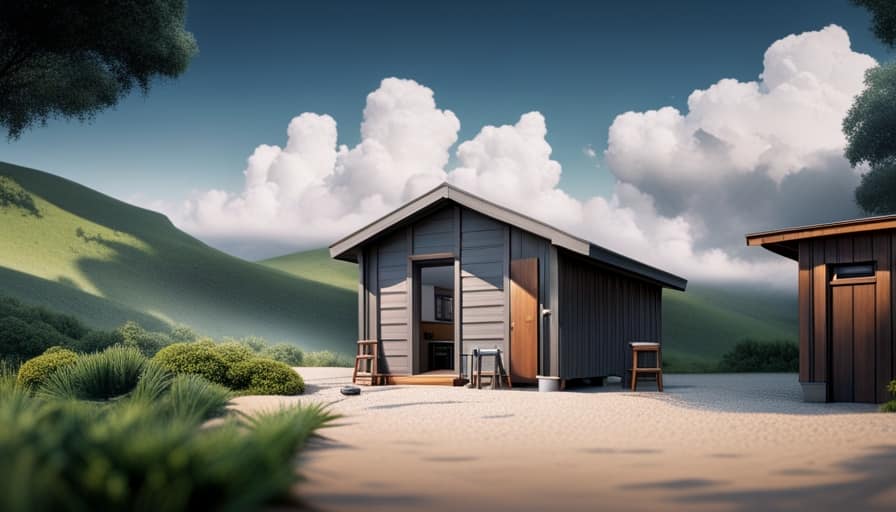
Recently, I have been bothered by these annoying little flies in my home, and I must say, they are really starting to get on my nerves!
But fear not, because I’ve done my research and I’m here to share some expert tips on how to get rid of those tiny flies once and for all.
From identifying the different types of flies to using natural remedies and chemical solutions, I’ve got you covered.
So let’s dive in and bid farewell to these unwanted guests together!
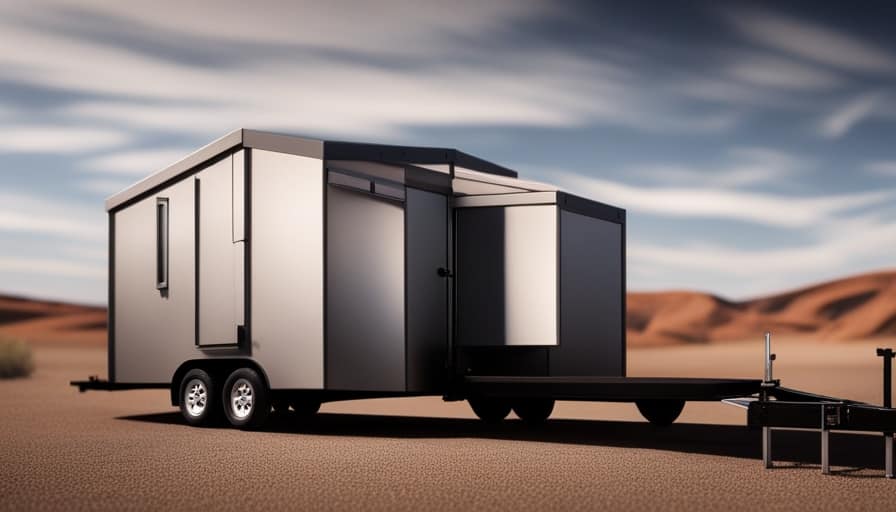
Key Takeaways
- Identifying the common types of tiny flies in your house is important for effective pest control.
- Tiny flies are attracted to moist and decaying organic matter, such as overripe fruits and rotting vegetables.
- Natural remedies, such as vinegar and dish soap solutions, can be used to eliminate tiny flies from your house.
- Preventing future infestations of tiny flies involves maintaining a clean environment, sealing cracks or openings, and storing perishable items properly.
Identifying the Common Types of Tiny Flies in Your House
I can easily identify the common types of tiny flies in my house by observing their physical characteristics and behavior. Flies are attracted to our homes for various reasons, including the presence of food, moisture, and waste. It’s important to note that these flies can pose health risks, as they can carry and spread disease-causing organisms.
To identify the types of flies, I first look at their size and color. For instance, fruit flies are small and have a tan or brown color. Drain flies, on the other hand, are gray or black and have a fuzzy appearance.
Understanding the Reasons Why Tiny Flies Infest Your Home
To understand why tiny flies infest your home, it’s important to consider their attraction to certain conditions and factors within your living space.
These flies, commonly known as fruit flies or drain flies, are attracted to moist and decaying organic matter. They seek out common breeding grounds such as overripe fruits, rotting vegetables, and damp areas in your kitchen or bathroom.
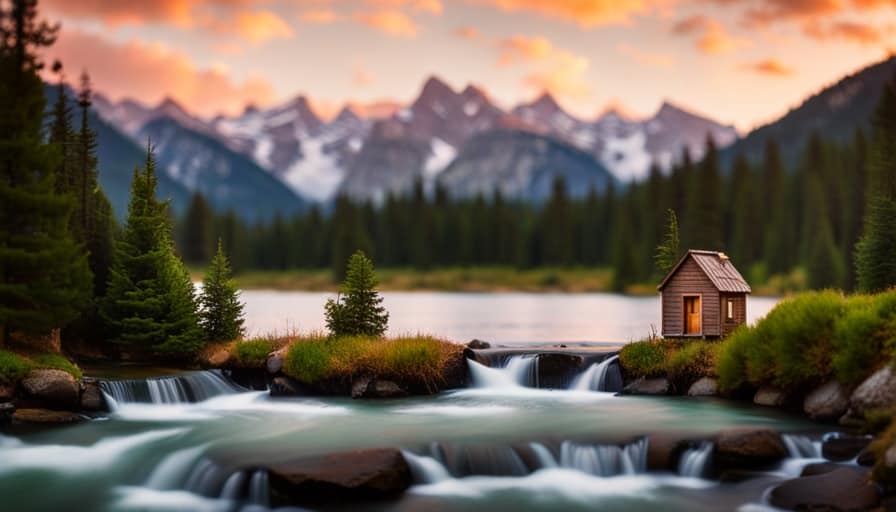
These tiny flies are also drawn to standing water in sinks, drains, and garbage disposals. Signs of a fly infestation include the presence of numerous flies hovering around these areas, as well as the sighting of their larvae or pupae.
It’s crucial to address these conditions and remove any potential breeding grounds to effectively eliminate the infestation and prevent future occurrences.
Natural Remedies to Eliminate Tiny Flies From Your House
One effective way to eliminate tiny flies from your house is by using a combination of vinegar and dish soap. This homemade vinegar fly spray is a non-toxic and practical solution to get rid of those pesky insects.
Here’s how you can make it:

- Mix equal parts of vinegar and water in a spray bottle.
- Add a few drops of dish soap to the mixture. The soap helps to break the surface tension of the liquid, making it easier for the flies to drown.
- Shake the bottle gently to ensure the ingredients are well combined.
- Spray the solution directly onto the flies or in areas where they’re commonly found, such as near windows or fruit bowls.
This natural fly spray isn’t only effective but also safe for your family and pets. It traps and kills the flies without the use of harmful chemicals.
Give it a try and say goodbye to those tiny flies in your house!
Using Chemical Solutions to Get Rid of Tiny Flies in Your Home
Bleach is a strong and effective chemical solution that can help eliminate tiny flies in your home. Chemical solutions, such as bleach, can be highly effective in eliminating tiny flies. The strong properties of bleach make it a powerful tool for killing flies and destroying their breeding grounds. However, it’s important to use caution when using chemical solutions, as they can be harmful to humans and pets if not used properly.
When comparing chemical solutions to natural remedies for getting rid of tiny flies in your house, it’s important to consider their effectiveness.
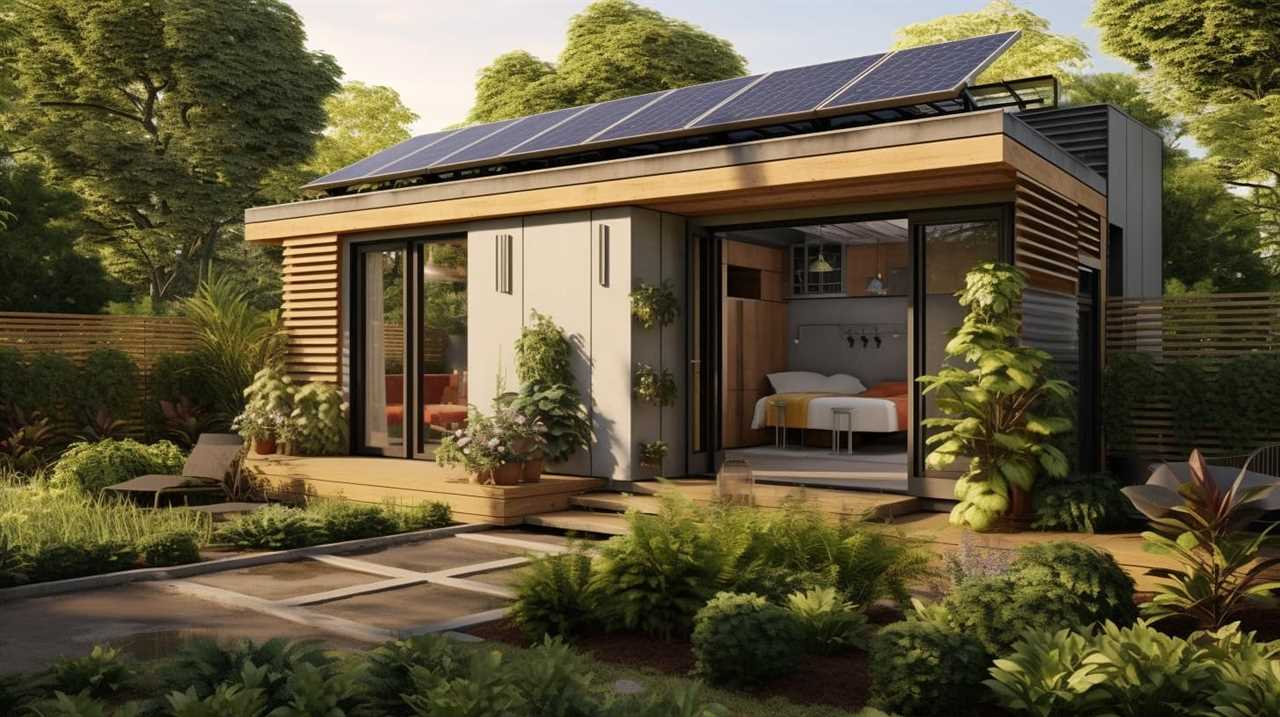
In the next section, we’ll discuss methods for preventing future infestations of tiny flies in your house.
Preventing Future Infestations of Tiny Flies in Your House
I can take steps to prevent future infestations of tiny flies in my house by implementing proper sanitation practices. By maintaining a clean environment, I can greatly reduce the chances of reinfestation. Here are three key practices to incorporate:
-
Regularly clean and sanitize all areas of the house, especially the kitchen and garbage disposal areas. Empty and clean trash cans frequently to prevent any organic matter from attracting flies.
-
Seal any cracks or openings in doors, windows, and screens to prevent flies from entering the house. Repair any damaged screens to ensure they’re intact and functioning properly.
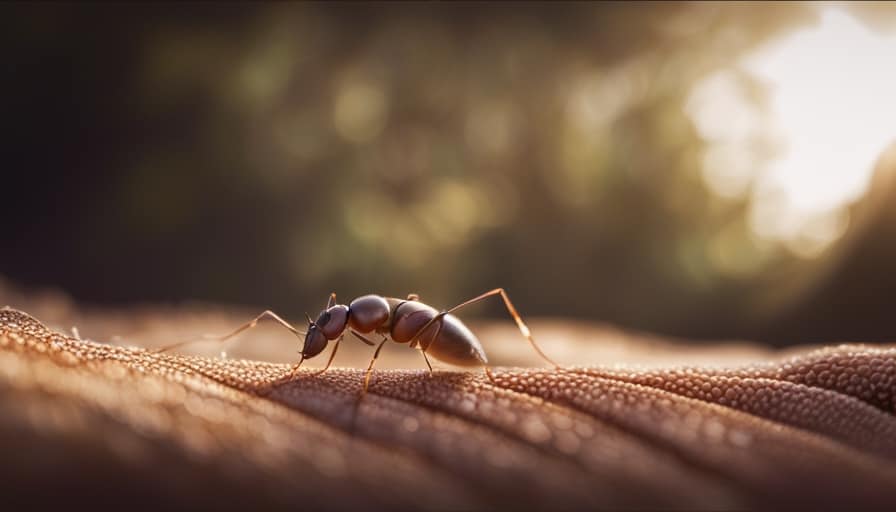
-
Store fruits, vegetables, and other perishable items in sealed containers or in the refrigerator. Flies are attracted to the odors of decaying food, so keeping it properly stored will deter them.
Frequently Asked Questions
How Do Tiny Flies Affect My Health?
Tiny flies can pose health risks, as they can carry bacteria and pathogens that can cause illnesses. To avoid health issues, it’s important to keep your house clean, dispose of trash properly, and eliminate any standing water where they can breed.
Can Tiny Flies Damage My Property?
Tiny flies can indeed cause damage to your property. Their larvae can infest and feed on organic materials, such as wood, causing structural damage over time. It’s important to address the issue promptly to prevent further harm.
Are Tiny Flies Attracted to Specific Food Sources?
Tiny flies are often attracted to specific food sources, such as overripe fruits or decaying organic matter. Understanding their breeding habits and implementing effective prevention methods, like proper sanitation and sealing entry points, can help keep them out of the house.
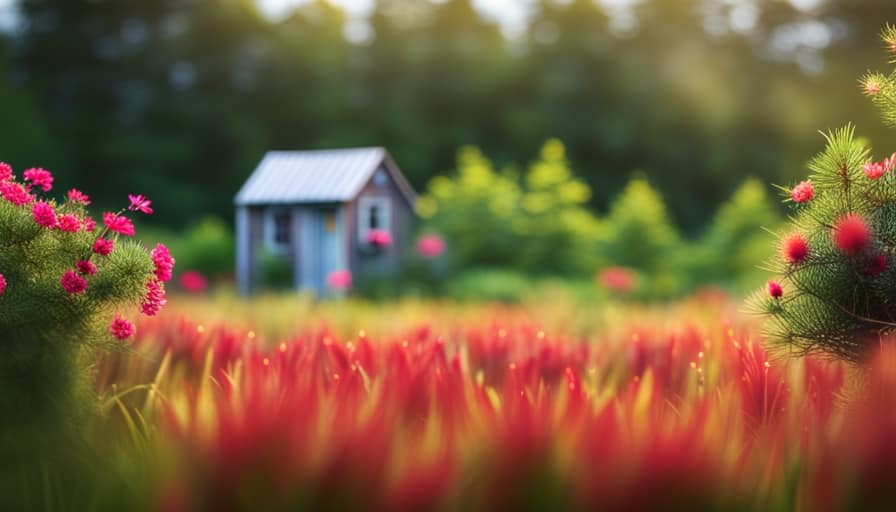
How Long Does It Take for Natural Remedies to Eliminate Tiny Flies?
In my experience, the speed of effectiveness of natural remedies versus chemical solutions for eliminating tiny flies can vary. While some natural remedies may work quickly, others may take longer to fully eliminate the flies. It’s important to be patient and consistent in your efforts.
Are There Any Long-Term Effects of Using Chemical Solutions to Get Rid of Tiny Flies?
Using chemical solutions to eliminate tiny flies in your house can have long-term environmental impacts. Consider using alternative methods like natural remedies or traps that are safer and more sustainable for the ecosystem.
Conclusion
In conclusion, it’s evident that tiny flies can be a nuisance in our homes. By understanding their types and reasons for infestation, we can effectively eliminate them using natural remedies or chemical solutions.
However, it’s crucial to prevent future infestations by maintaining cleanliness and proper waste management. Rest assured, with the right knowledge and approach, you can bid farewell to these pesky insects and enjoy a fly-free home environment.

I’m Theodore, and I love tiny houses. In fact, I’m the author of Tiny House 43, a book about tiny houses that are also tree houses. I think they’re magical places where imaginations can run wild and adventures are just waiting to happen.
While tree houses are often associated with childhood, they can be the perfect adult retreat. They offer a cozy space to relax and unwind, surrounded by nature. And since they’re typically built on stilts or raised platforms, they offer stunning views that traditional homes simply can’t match.
If you’re looking for a unique and romantic getaway, a tree house tiny house might just be the perfect option.
Beginners Guides
How Do I Get Rid of Tiny Ants in My House

- Health risks: Are there any potential diseases that can be transmitted by ants in the house?
- Prevention methods: What are some effective ways to keep ants out of the house to avoid any health risks?
I have been dealing with these stubborn small ants in my home, and I’m sure you can empathize. It seems like I am stuck in an endless game of hide-and-seek with these little creatures.
But fear not, because I’ve done my research and I’m here to share some tried and true methods to get rid of them for good. From natural remedies to chemical solutions, I’ve got you covered.
So let’s roll up our sleeves and say goodbye to those pesky ants together!
Key Takeaways
- Identifying the type of ants in your house is important in order to effectively address the infestation issue.
- Understanding the behavior and nesting habits of tiny ants is essential in finding and eliminating their colonies.
- Natural remedies such as vinegar and water solution, essential oils, and cinnamon can help repel and eliminate tiny ants.
- If natural remedies don’t work, consider using chemical solutions or seeking professional pest control services for a safer and more comprehensive approach.
Identifying the Type of Ants in Your House
I personally find it helpful to identify the type of ants in my house by observing their behavior and physical features. Distinguishing characteristics play a crucial role in determining the species of ants present.
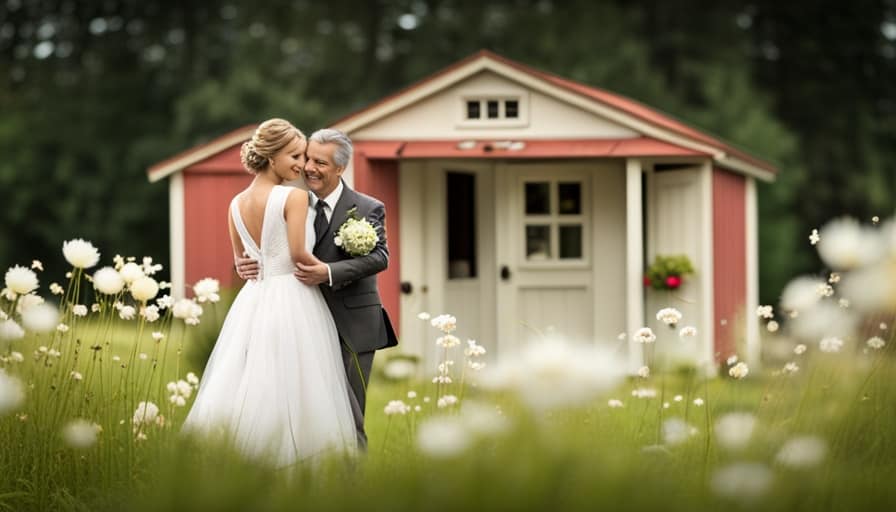
Some common types of household ants include pavement ants, odorous house ants, and pharaoh ants. Pavement ants are dark brown or black with parallel grooves on their heads and thoraxes. Odorous house ants emit a distinct odor when crushed, often described as a rotten coconut smell. Pharaoh ants are light yellow to reddish-brown and have two distinct nodes on their petioles.
In terms of common habitats, ants can be found in various areas of the house, including kitchens, bathrooms, and around food sources. Understanding the behavior and nesting habits of tiny ants is essential in effectively addressing the infestation issue.
Understanding the Behavior and Nesting Habits of Tiny Ants
There are several key factors to consider when understanding the behavior and nesting habits of tiny ants in your house.
These tiny creatures are social insects, living in colonies that can range from a few dozen to thousands of individuals. They communicate and cooperate through chemical signals and pheromones, which helps them locate food sources and establish trails.

When it comes to nesting, tiny ants can build their colonies in various locations, such as in wall voids, under floors, or even in potted plants. Understanding their nesting habits is crucial in effectively eliminating them from your house.
It’s important to note that while ants can be a nuisance indoors, they play a vital role in the ecosystem, helping to decompose organic matter and control other insect populations. However, their presence in food storage areas can contaminate and spoil food, making it necessary to address their infestation promptly and safely.
Natural Remedies to Get Rid of Tiny Ants in Your House
One effective natural remedy to eliminate tiny ants in your house is using a vinegar and water solution. Vinegar, with its strong odor, disrupts their scent trails and confuses them, making it difficult for them to navigate. To create the solution, mix equal parts of white vinegar and water in a spray bottle. Then, simply spray the solution directly onto the ants or their entry points.
Another natural remedy is using essential oils, such as peppermint, lemon, or tea tree oil. These oils have strong scents that repel ants. Mix a few drops of your chosen essential oil with water and spray it in areas where ants are present.
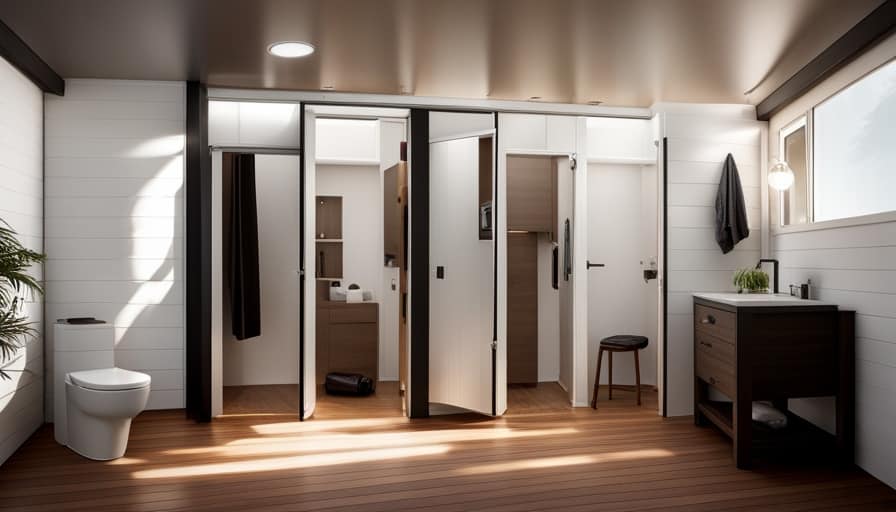
These natural remedies provide an eco-friendly and safe way to get rid of tiny ants in your house. However, if these methods don’t work, it may be necessary to consider chemical solutions for eliminating tiny ants.
Chemical Solutions for Eliminating Tiny Ants
If you’re dealing with a persistent infestation of tiny ants in your house, using insecticide sprays can be an effective solution to eliminate them. However, it is important to consider non-toxic alternatives and professional pest control services for a safer and more comprehensive approach.
| Chemical Solution | How it Works | Pros | Cons |
|---|---|---|---|
| Insecticide sprays | Kills ants on contact | – Easy to use – Widely available – Immediate results |
– Chemical exposure – Harmful to pets and children – Potential environmental impact |
While insecticide sprays can quickly kill ants, they may pose risks to your health and the environment. If you prefer non-toxic alternatives, consider using natural repellents like vinegar, lemon juice, or essential oils. These substances are less harmful and can help deter ants from entering your home.
Another option is to hire professional pest control services. They have the expertise and specialized equipment to effectively eliminate ant infestations. Professionals can also assess the extent of the problem and provide long-term solutions to prevent future infestations.
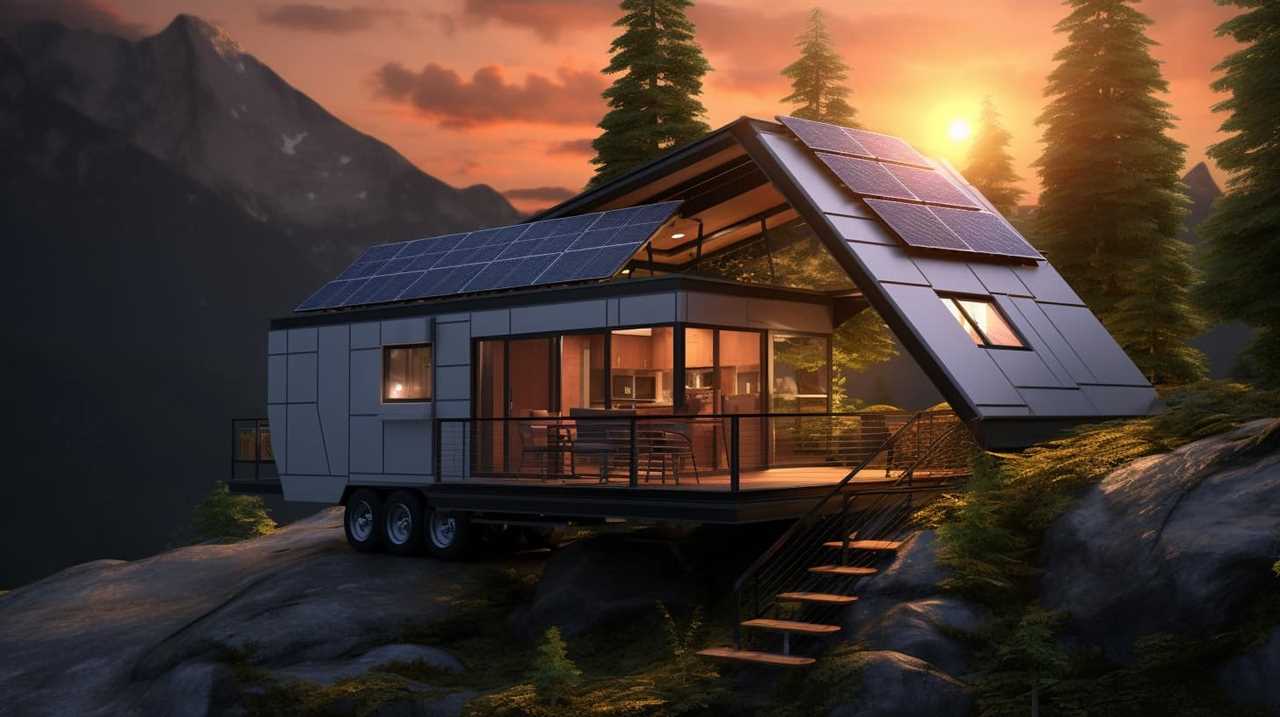
Preventing Future Infestations: Tips and Tricks
When I encountered a persistent infestation of tiny ants in my house, I took proactive steps to prevent future infestations. Here are some effective ant proofing techniques for your home and long-term strategies for keeping ants out:
-
Seal cracks and crevices: Inspect your house for any openings where ants can enter, such as gaps around doors, windows, and pipes. Use caulk or weatherstripping to seal these entry points.
-
Keep your house clean: Clean up food and drink spills promptly, and store food in airtight containers. Wipe down countertops and sweep floors regularly to remove any crumbs or residue that may attract ants.
-
Remove potential ant habitats: Trim back vegetation that’s in contact with your house, as ants can use it as a bridge to enter. Also, keep firewood and other outdoor items away from the foundation.
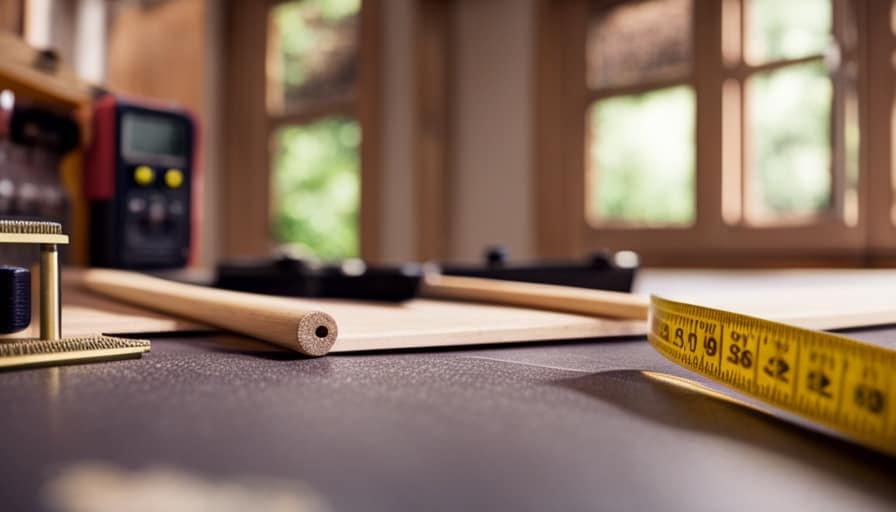
-
Use natural deterrents: Certain scents like peppermint, cinnamon, and vinegar can repel ants. Spray these substances around entry points or wipe down surfaces to discourage ants from entering.
Frequently Asked Questions
How Do I Get Rid of Ants in My Garden?
To get rid of ants in my garden, I use organic pest control methods and natural ant repellents. These methods are effective in keeping ants away and maintaining a healthy garden environment.
Can I Use Vinegar to Kill Ants?
Yes, vinegar can be used to kill ants. However, there are also other natural ant repellents that you can consider using as alternatives to vinegar.
What Should I Do if I Have a Severe Ant Infestation?
If I have a severe ant infestation, I would first focus on prevention tips such as sealing entry points and removing food sources. If the problem persists, I would consider professional ant extermination options for effective and long-lasting results.

Are There Any Health Risks Associated With Ants in the House?
There are potential health risks associated with ants in the house. They can contaminate food, spread bacteria, and even cause allergies. It’s important to take preventive measures to avoid these risks.
Can I Use Essential Oils to Repel Ants?
I find that using essential oils for ant control can be effective. However, it’s important to consider the pros and cons of natural ant repellents. While they are safe and eco-friendly, they may not be as potent as chemical options.
Conclusion
In conclusion, by identifying the type of ants in your house, understanding their behaviors and nesting habits, and implementing natural or chemical remedies, you can effectively get rid of tiny ants.
However, prevention is key to avoiding future infestations. Just as a fortress protects its kingdom from invaders, taking proactive measures will safeguard your home from these pesky pests.
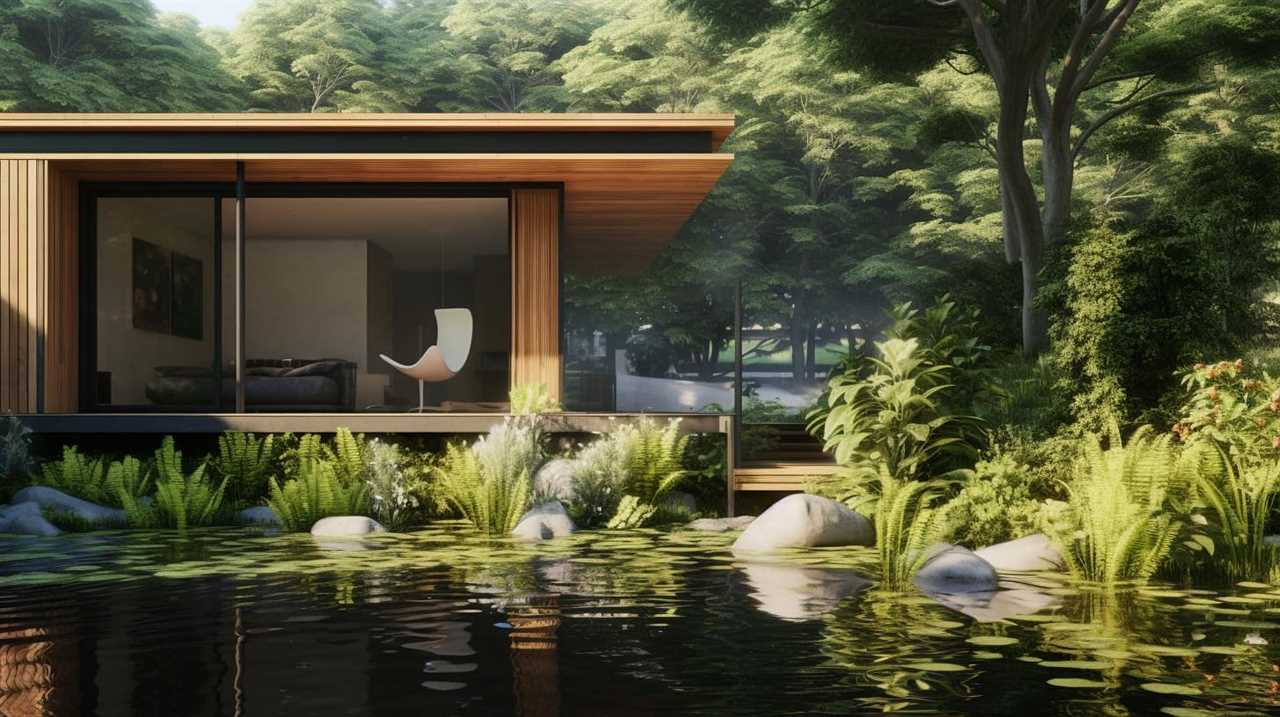
Stay vigilant and maintain cleanliness to ensure a ant-free environment.
I’m Theodore, and I love tiny houses. In fact, I’m the author of Tiny House 43, a book about tiny houses that are also tree houses. I think they’re magical places where imaginations can run wild and adventures are just waiting to happen.
While tree houses are often associated with childhood, they can be the perfect adult retreat. They offer a cozy space to relax and unwind, surrounded by nature. And since they’re typically built on stilts or raised platforms, they offer stunning views that traditional homes simply can’t match.
If you’re looking for a unique and romantic getaway, a tree house tiny house might just be the perfect option.
Beginners Guides
How Cheap Can You Build a Tiny House

Constructing a small house is akin to figuring out a puzzle – it can be difficult, but the payoff is valuable. As someone who enjoys discovering inventive answers, I sympathize with the longing to create a gorgeous home without breaking the bank.
In this article, we’ll explore the factors that affect the cost of building a tiny house and discover budget-friendly materials and labor-saving strategies. Join me on this journey to uncover just how cheap you can build your dream tiny house.
Key Takeaways
- Choosing the right location in a rural area with lower land prices and fewer building restrictions can significantly affect the cost of building a tiny house.
- Using alternative building methods such as reclaimed materials or repurposed items can help reduce costs.
- Implementing cost-saving techniques and building on a budget are important factors in building a cheap tiny house.
- Utilizing budget-friendly building materials, such as affordable insulation options and low-cost flooring alternatives, can also contribute to building a cheap tiny house.
Factors Affecting the Cost of Building a Tiny House
What are the factors that affect the cost of building a tiny house?
When it comes to building a tiny house on a budget, there are several cost-saving techniques and alternative building methods that can significantly impact the overall cost.

One of the main cost-saving techniques is choosing the right location. Building in a rural area with lower land prices and fewer building restrictions can help keep costs down.
Another factor that affects the cost is the size and design of the tiny house. The simpler the design, the more cost-effective it will be.
Additionally, using alternative building methods such as reclaimed materials or repurposed items can also help reduce costs.
By considering these factors and implementing cost-saving techniques, it’s possible to build a tiny house on a budget.
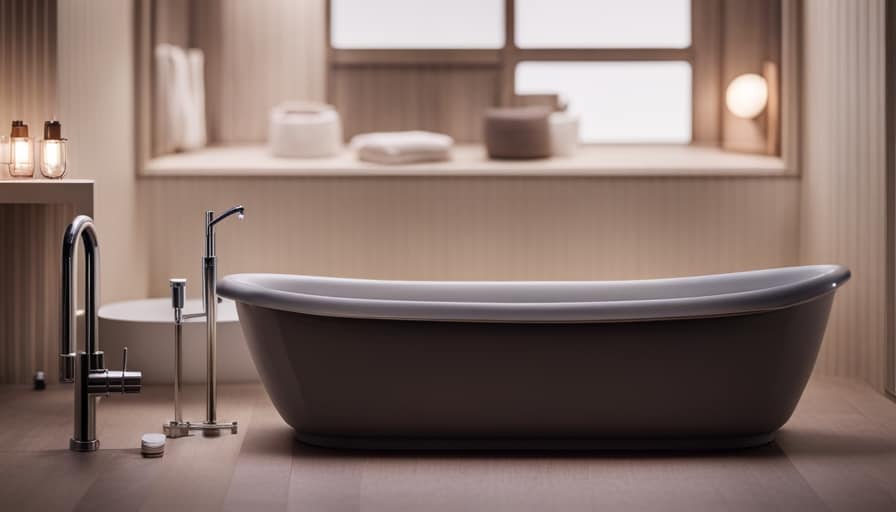
Transitioning into the subsequent section about budget-friendly tiny house building materials, let’s explore how the choice of materials can further impact the overall cost.
Budget-Friendly Tiny House Building Materials
When it comes to building a tiny house on a budget, I can find affordable building materials that will help keep costs down. One area where I can save money is by choosing affordable insulation options. Instead of expensive spray foam insulation, I can opt for alternatives such as fiberglass batts or rigid foam boards. These options are cost-effective and still provide good insulation for the tiny house. Additionally, I can consider low-cost flooring alternatives to save money. Instead of hardwood or tile, I can use vinyl plank flooring or laminate flooring, which are both affordable and durable. By making smart choices when it comes to insulation and flooring, I can build a budget-friendly tiny house without compromising on quality.
| Affordable Insulation Options | Low Cost Flooring Alternatives |
|---|---|
| Fiberglass batts | Vinyl plank flooring |
| Rigid foam boards | Laminate flooring |
Strategies for Saving Money on Tiny House Design
To save money on my tiny house design, I can employ cost-saving strategies such as utilizing multipurpose furniture and maximizing storage space. By incorporating cost-effective design options and implementing DIY tiny house building techniques, I can create a functional and affordable living space.
One key strategy is to choose furniture that serves multiple purposes, such as a sofa that can be converted into a bed or a dining table that can be folded away when not in use. This not only saves money on buying separate pieces of furniture but also maximizes the use of limited space.
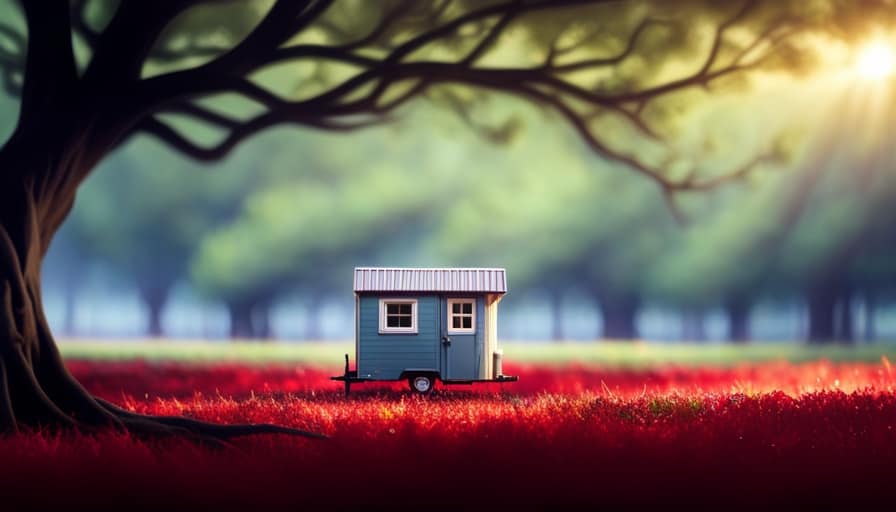
Another cost-saving strategy is to maximize storage space by utilizing built-in shelving, under-bed storage, and wall-mounted organizers. This eliminates the need for additional storage furniture and keeps the space clutter-free.
Creative Ways to Reduce Labor Costs in Tiny House Construction
I can significantly reduce labor costs in tiny house construction by hiring a small team of skilled workers instead of a large crew. This approach allows for effective coordination and streamlined communication, resulting in increased efficiency and reduced labor hours.
Here are some creative ways to further reduce labor costs in tiny house construction:
-
Utilize DIY construction techniques: Encourage the use of DIY construction techniques, where homeowners can actively participate in the building process. This not only reduces labor costs but also creates a sense of ownership and satisfaction.
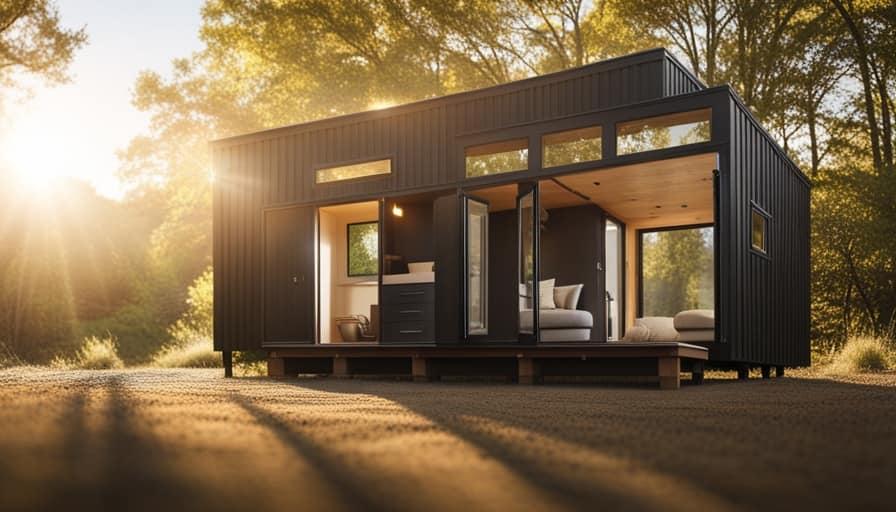
-
Incorporate alternative energy sources: Explore the use of alternative energy sources such as solar panels or wind turbines. By integrating these systems during the construction phase, you can avoid additional labor costs associated with retrofitting.
-
Optimize material usage: Carefully plan and optimize the use of materials to minimize waste. This can be achieved by accurately measuring and cutting materials, as well as repurposing leftover materials for other parts of the project.
-
Prioritize efficient design: Focus on designing a space that maximizes functionality and minimizes unnecessary labor-intensive features. This includes thoughtful space planning, utilizing multipurpose furniture, and incorporating efficient storage solutions.
Implementing these strategies won’t only help reduce labor costs but also contribute to a sustainable and budget-friendly tiny house construction process.
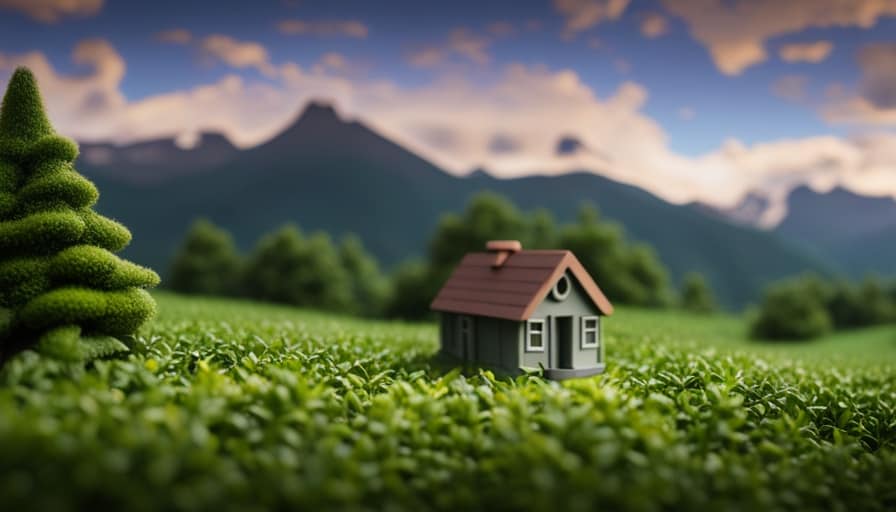
Tips for Finding Affordable Land for Your Tiny House
By researching online listings and networking with local real estate agents, I can easily find affordable land for my tiny house. It is important to explore alternative financing options for purchasing land for a tiny house to keep costs low. One option is owner financing, where the seller acts as the lender and allows you to make monthly payments instead of obtaining a traditional mortgage. Another option is crowdfunding, where you can raise funds from a community of supporters who believe in your tiny house project. Additionally, negotiating with local municipalities for reduced fees and regulations for tiny house living can save you money in the long run. Some municipalities may be open to creating special zoning or permitting regulations for tiny houses, making it easier and more affordable to live in them.
| Financing Options | Benefits |
|---|---|
| Owner Financing | Lower interest rates, flexible payment terms |
| Crowdfunding | Community support, no need for traditional loans |
| Negotiating with Local Municipalities | Reduced fees, simplified regulations |
Finding affordable land for your tiny house is a crucial step in building your dream home while staying within your budget. With the right research, networking, and negotiation skills, you can make your tiny house dreams a reality.
Frequently Asked Questions
What Are the Most Common Mistakes to Avoid When Building a Tiny House on a Tight Budget?
Common pitfalls to avoid when building a tiny house on a tight budget include overestimating DIY skills, not researching local codes and regulations, and not budgeting for unexpected expenses. Cost saving tips include using reclaimed materials and prioritizing essential features.
Are There Any Financing Options Available for Building a Tiny House?
Financing options for building a tiny house include personal loans, RV loans, and construction loans. Pros include flexibility, ownership, and the opportunity to live mortgage-free. Cons may include higher interest rates and stricter qualification requirements.
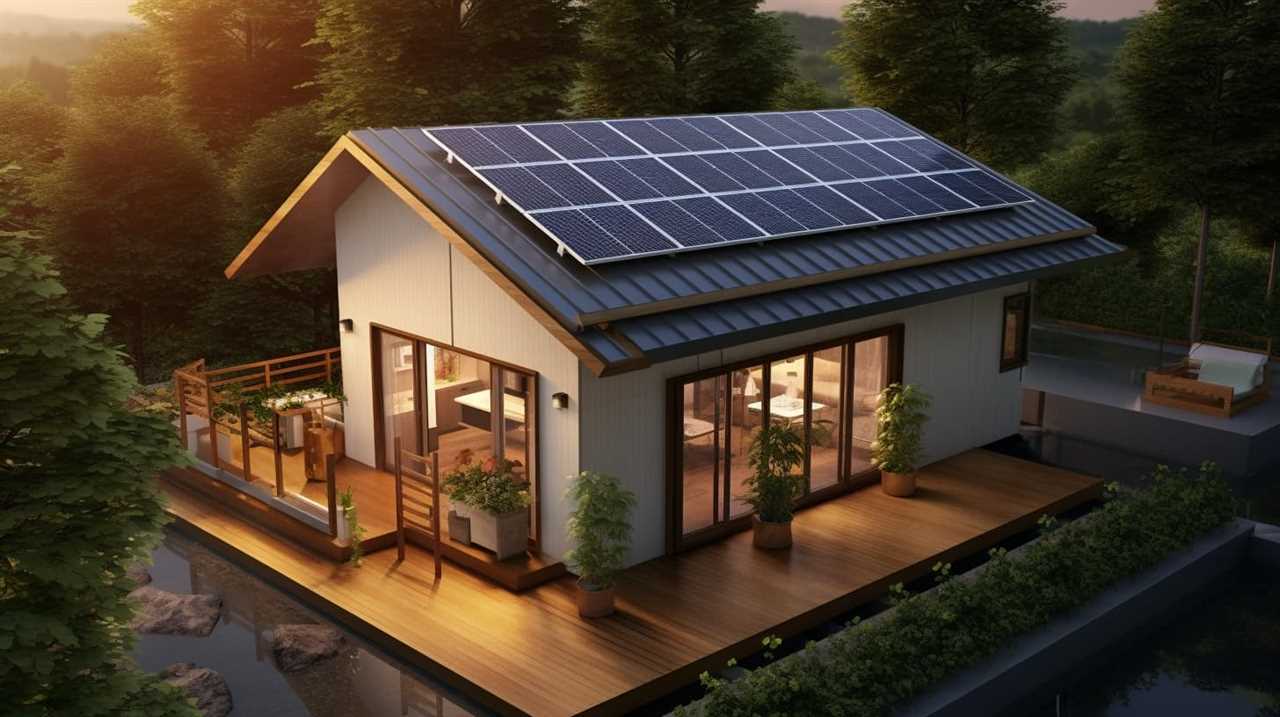
How Much Does It Cost to Maintain a Tiny House on a Yearly Basis?
Maintaining a tiny house on a yearly basis can be cost-effective. By embracing the benefits of living in a tiny house vs. a traditional home and following tips for minimizing maintenance costs, I can save money and enjoy a simpler lifestyle.
Can You Build a Tiny House Using Recycled or Salvaged Materials?
Using recycled and salvaged materials for a tiny house not only saves money, but also gives a sense of purpose and accomplishment. It’s a creative way to build sustainably and reduce waste while creating a unique and personalized home.
Are There Any Legal Restrictions or Regulations to Consider When Finding Land for a Tiny House?
When finding land for a tiny house, it’s important to consider legal restrictions and zoning regulations. Land requirements vary, and financing options may be limited. Maintenance costs can be lower, and eco-friendly building materials are often used.
Conclusion
In conclusion, building a tiny house can be an affordable and cost-effective option for those looking to downsize or live a more minimalist lifestyle. By considering factors such as materials, design strategies, and labor costs, it’s possible to build a tiny house on a tight budget.

With a little creativity and resourcefulness, you can achieve your dream of owning a tiny house without breaking the bank. So why wait? Start planning and building your own tiny house today!
I’m Theodore, and I love tiny houses. In fact, I’m the author of Tiny House 43, a book about tiny houses that are also tree houses. I think they’re magical places where imaginations can run wild and adventures are just waiting to happen.
While tree houses are often associated with childhood, they can be the perfect adult retreat. They offer a cozy space to relax and unwind, surrounded by nature. And since they’re typically built on stilts or raised platforms, they offer stunning views that traditional homes simply can’t match.
If you’re looking for a unique and romantic getaway, a tree house tiny house might just be the perfect option.
-

 Beginners Guides2 weeks ago
Beginners Guides2 weeks agoHow To Buy A Tesla Tiny House
-

 Energy Efficiency2 months ago
Energy Efficiency2 months agoBest Tiny Homes For Cold Climates
-

 Beginners Guides2 weeks ago
Beginners Guides2 weeks agoTiny House Nation Where Are They Now Stephanie
-

 Tiny House Resources (e.g., legalities, cost, insurance, FAQs)2 months ago
Tiny House Resources (e.g., legalities, cost, insurance, FAQs)2 months agoDo Tiny Homes Need Planning Permission?
-

 Beginners Guides3 weeks ago
Beginners Guides3 weeks agoFrom The Show Tiny House Nation How Many Keep Their Tiny House?
-

 Beginners Guides2 months ago
Beginners Guides2 months agoUsing a Climbing Net For Treehouse Construction
-

 Beginners Guides2 months ago
Beginners Guides2 months agoHow to Build a Treehouse Without Drilling Into the Tree
-

 Beginners Guides3 weeks ago
Beginners Guides3 weeks agoTiny House Nation Who Pays For The Houses


















